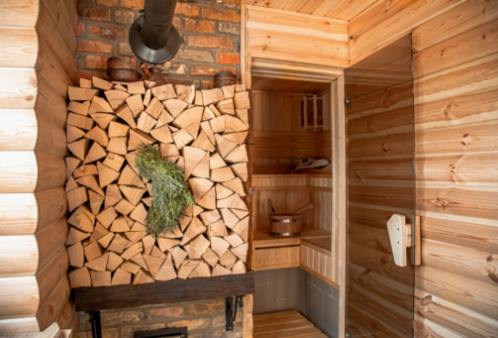A crucial aspect of maintaining a comfortable and efficient sauna environment is ensuring proper ventilation. Without adequate ventilation, sauna rooms can become stuffy and uncomfortable, leading to decreased performance and potential safety hazards. By implementing effective ventilation strategies and avoiding common mistakes, you can optimize the airflow in your sauna for a more enjoyable experience.

Strategies for Optimizing Ventilation in Sauna Rooms
Without adequate ventilation, sauna rooms can become uncomfortably hot and humid, leading to potential health risks and damage to the sauna itself. Here are some key strategies for optimizing ventilation in sauna rooms:
Install a Ventilation System: Investing in a ventilation system specifically designed for sauna rooms is essential. These systems are designed to efficiently remove hot air and moisture, ensuring a comfortable and safe environment for sauna users.
Position Vents Strategically: Place vents at optimal locations in the sauna room to ensure proper air circulation. Vents should be positioned both low and high on the walls to facilitate the flow of fresh air and the removal of hot air and moisture.
Use Adjustable Vents: Consider installing adjustable vents that allow you to control the amount of ventilation in the sauna room. This will enable you to customize the air circulation to suit the preferences of sauna users.
Regular Maintenance: Regularly inspect and clean the ventilation system to ensure it is functioning at its best. Clogged vents or filters can hinder airflow and reduce the effectiveness of the ventilation system.
Monitor Humidity Levels: Keep an eye on the humidity levels in the sauna room and adjust the ventilation settings accordingly. Excessive humidity can make the sauna environment uncomfortable and potentially hazardous.
By implementing these strategies for optimizing ventilation in sauna rooms, you can ensure a safe, comfortable, and enjoyable sauna experience for yourself and your guests. Proper ventilation not only enhances the performance of the sauna but also promotes overall well-being and relaxation.
Common Ventilation Mistakes to Avoid in Wood-Burning Saunas
However, there are some common ventilation mistakes that many people make when installing or using a wood-burning sauna. By avoiding these mistakes, you can optimize the ventilation in your sauna and create a more enjoyable sauna experience.
One common mistake is inadequate ventilation. Some sauna users may mistakenly believe that a small vent or window is sufficient for ventilation, but in reality, proper ventilation requires a larger vent or multiple vents to allow for adequate air flow. Without proper ventilation, the sauna can become stuffy and uncomfortable, and the risk of carbon monoxide build-up increases.
Another common mistake is improper placement of vents. Vents should be strategically placed to ensure that fresh air is being circulated throughout the sauna and that smoke and other fumes are being adequately drawn out. Placing vents too close to the stove or heater can result in uneven distribution of heat and poor ventilation.
Additionally, some sauna users may forget to open the vents before starting a fire in the sauna stove. This can lead to a build-up of smoke and fumes inside the sauna, creating a potentially dangerous situation. It is important to always open the vents before lighting the stove to ensure proper ventilation.
Finally, failing to regularly clean and maintain the ventilation system can also lead to ventilation problems in wood-burning saunas. Dust and debris can accumulate in vents over time, obstructing air flow and reducing the effectiveness of the ventilation system. Regularly cleaning and inspecting the vents can help prevent ventilation issues and ensure a safe and enjoyable sauna experience.
By avoiding these common ventilation mistakes and taking the necessary steps to properly ventilate your wood-burning sauna, you can create a comfortable and safe environment for enjoying the benefits of sauna therapy.
Understanding the Relationship Between Ventilation and Sauna Performance
Proper ventilation is crucial for the performance and effectiveness of a sauna. Without adequate ventilation, the sauna room can become stuffy, humid, and uncomfortable to use. In addition to ensuring a comfortable environment for sauna users, ventilation plays a key role in maintaining the longevity of the sauna itself.
Effective ventilation helps to control the temperature and humidity levels within the sauna room. By allowing fresh air to enter and stale air to exit, ventilation helps to prevent the buildup of excess moisture, which can lead to mold, mildew, and other issues. Proper ventilation also helps to distribute heat evenly throughout the sauna room, ensuring a consistent and comfortable sauna experience for users.
In addition to promoting a more enjoyable sauna experience, proper ventilation can also improve the efficiency and longevity of the sauna. By allowing for the proper airflow, ventilation helps to prevent the overheating of sauna components, such as the heater and rocks. This can help to extend the lifespan of these components and reduce the risk of overheating-related malfunctions.
Overall, understanding the relationship between ventilation and sauna performance is essential for maintaining a comfortable and efficient sauna environment. By implementing effective ventilation strategies, sauna owners can ensure that their sauna remains a relaxing and enjoyable space for years to come.
